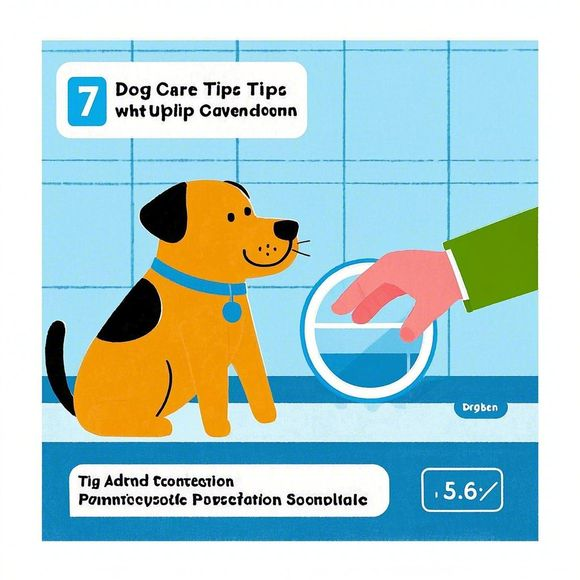7 Pet Care Tips That Often Slip Under Pet Owners’ Radar

Tip 1: Early Prevention of Pet Obesity
Pet obesity has unfortunately become a prevalent health issue among dogs and cats. According to a 2022 survey, approximately 59% of dogs and 61% of cats are overweight or obese. Obesity can make your pet more susceptible to various health problems like arthritis and diabetes.
It's crucial to start monitoring your pet's weight from a young age. Your veterinarian can guide you on how to conduct a “body condition” score for your dog or cat, which is the most effective way to keep track of their weight.
Dogs and cats have diverse nutritional requirements as they progress through different life stages. For instance, a puppy or kitten, due to its rapid growth, demands more calories compared to a healthy adult dog or cat. They also need food specifically formulated and labeled for growing animals to meet their particular nutritional needs. Underlying health conditions and activity levels further influence your pet's nutritional demands.
At all times, ensure that you're providing a high-quality food suitable for your pet's current life stage. Unless recommended by your vet, adult animals shouldn't be fed puppy or kitten food.
Tip 2: The Significance of Pet Dental Care

Pet dental care is an aspect that is frequently overlooked. Just like humans, pets can suffer from various dental problems. Your pet's teeth may have a different shape from yours, but they are equally sensitive to dental pain.
Veterinary dentists highly recommend brushing your pet's teeth daily with a pet-safe toothpaste. Additionally, regular dental cleanings performed by a veterinarian are essential. If daily brushing isn't possible, even once or twice a week is better than not doing it at all. Your vet can offer guidance on choosing the most suitable pet toothbrush and devising an effective dental care plan.
Some pets might resist the toothbrush, but that doesn't mean you should abandon at-home dental care. There are other alternatives for maintaining your pet's dental health:
- Dental treats designed specifically for dogs and cats can help clean teeth while providing a tasty snack.
- Dental powders that can be added to water or water additives are available to promote oral hygiene.
- Prescription dental diets formulated for dogs or cats can contribute to better dental health.
- Dental wipes or gels can be used to clean teeth and gums when brushing isn't feasible.
Tip 3: Spotting Arthritis in Pets Early
Arthritis is a frequently encountered issue in pets, especially in senior ones or those with developmental problems like hip dysplasia. Detecting it early and intervening promptly can potentially slow down its progression and enhance your pet's quality of life.
In pets, the more evident signs of arthritis include limping, swollen joints, and muscle atrophy. However, both dogs and cats may exhibit other, more subtle indications that often precede the pronounced limping. These can be a reluctance to engage in activities such as jumping onto furniture or climbing stairs, a noticeable decrease in energy levels, and a lack of interest in play. You might also observe challenges when they perform basic movements, like getting in and out of the car or lowering their head to reach their food or water bowls.
If you notice any of these signs in your pet, it's advisable to consult your veterinarian. Two effective ways to help manage arthritis include maintaining your pet at a healthy weight and considering joint supplements designed for dogs or cats.
Tip 4: Embrace Screening Tests for Pets
It can be tempting for pet owners to decline the recommended lab work during their pet's wellness check-ups as a means of cutting costs. However, just as our own doctors advise regular bloodwork and urine tests to monitor our health, veterinarians strongly recommend routine monitoring of your pet's lab results. For young adult dogs and cats, annual testing is typically the norm, while for senior pets, your vet may suggest lab work twice a year. In some cases, pets with specific health concerns might require even more frequent monitoring.
These lab tests play a crucial role in enabling your veterinarian to detect potential health issues at an early stage. Conditions such as diabetes, kidney disease, liver disease, Cushing’s disease, hypothyroidism, and hyperthyroidism can often be identified before symptoms become severe. Remember, for nearly all health conditions, early diagnosis and intervention significantly improve your pet's prognosis and quality of life.
Tip 5: Prioritizing Your Pet's Mental Well-being

Just like humans, pets can experience a range of mental health issues. Dogs and cats can suffer from anxiety disorders, depression, obsessive-compulsive tendencies, traumatic stress responses, phobias, and even dementia. For example, a dog that has been through a traumatic event like being in a car accident might develop post-traumatic stress and become overly fearful or aggressive in certain situations.
Signs of mental distress in pets can include changes in behavior such as increased aggression, difficulty sleeping, excessive barking or meowing, loss of interest in activities they once enjoyed, and changes in appetite. A cat that was previously playful and affectionate might suddenly become withdrawn and hide away all day if it's feeling stressed or depressed.
There are several ways you can safeguard your pet's mental well-being:
- Establish a Routine: Feed your pet at the same times each day and engage in regular play or exercise sessions. This predictability can reduce anxiety and make your pet feel more secure. For instance, a dog that knows it will go for a walk every evening after dinner will look forward to that activity and feel calmer throughout the day.
- Provide an Enriching Environment: Rotate your pet's toys regularly to keep things interesting. Consider adding new elements to their living space, like a scratching post for a cat or a puzzle toy for a dog. You could also create a small indoor obstacle course for your pet to explore and play in.
- Exercise Your Pet: Take your dog for frequent walks, play fetch, or engage in other forms of physical activity. For cats, use toys like feather wands or laser pointers to encourage them to run and jump. Exercise helps release endorphins, which can boost your pet's mood.
- Learn Your Pet's Body Language: Pay close attention to how your pet communicates. If you notice signs of stress, such as a cat flattening its ears or a dog tucking its tail, gently remove them from the stressful situation or distract them with a favorite toy.
- Keep Up on Training: Teach your pet new tricks or commands. This not only provides mental stimulation but also strengthens the bond between you and your pet. A dog that learns to roll over or a cat that responds to its name when called feels a sense of accomplishment.
If you notice any significant or persistent changes in your pet's behavior, it's crucial to consult your veterinarian or a veterinary behaviorist. They can help identify the underlying cause and provide appropriate treatment or advice to get your pet back on track mentally.
Tip 6: Adhering to a Strict Parasite Prevention Schedule

Veterinarians strongly recommend year-round parasite prevention for pets, and this applies even to indoor-only cats. The habitats and active seasons of parasites are expanding, and many of these bothersome pests can bite even during the coldest months of winter.
Missing a dose of parasite prevention medication can put your pet at risk. Some preventatives only target parasites at specific life stages. So, if you forget to administer a dose or two, the medication might not be effective against the parasites when you remember to give it. Your vet can offer valuable advice on choosing the most suitable flea and tick medication for your dog or cat.
To ensure your pet's parasite prevention schedule is followed meticulously, set reminders on your phone or calendar. This simple step can help you stay on track and keep your furry friend protected.
Tip 7: Considering Pet Insurance
Purchasing pet insurance can potentially save you a significant amount of money on your pet's healthcare expenses. There are three main types of insurance plans available for dogs and cats: accident and illness (comprehensive), accident-only, and wellness/preventative.
Accident and illness plans typically cover any disease or injury that isn't pre-existing or congenital (present at birth). This means that if your pet suddenly falls ill or gets injured, the insurance can help offset the costs of diagnosis, treatment, and medications. Accident-only plans, as the name suggests, focus on covering injuries and illnesses that occur due to an accident, such as being hit by a car or ingesting a foreign object. Wellness or preventative plans are usually add-on options that assist in spreading out the cost of routine care like vaccines, dental cleanings, and other recommended preventive measures.
Some insurance plans also offer additional add-on options, such as coverage for alternative treatments or end-of-life care. It's important to note that with most pet insurance, you'll need to pay the veterinary bill upfront at the clinic. Then, you submit a claim and will be reimbursed a certain percentage of the cost, after meeting your deductible. You'll typically pay for the insurance plan in the form of a monthly premium.
If you're considering pet insurance, it's crucial to carefully review what different companies cover. Keep in mind that these plans generally don't cover pre-existing conditions, and there are often required waiting periods before a new condition is eligible for coverage. Buying insurance for your young pet before any chronic health issues develop can be especially beneficial. Some insurance providers will “lock in” your premium for your pet's lifetime, rather than increasing it as your pet ages. However, if you purchase a plan when your pet is older, you can expect a higher premium compared to insuring a healthy puppy or kitten.
Conclusion
In conclusion, the well-being of our furry companions hinges on our attention to these often overlooked aspects of pet care. From maintaining a healthy weight and oral hygiene to safeguarding their mental health and planning for potential medical expenses, each tip plays a crucial role. As pet parents, we hold the responsibility of ensuring our pets lead happy, healthy lives. By integrating these simple yet vital practices into our daily routines, we can enjoy many more years of unconditional love and joy with our beloved pets. Let's make a commitment to be more vigilant and proactive in our pet care, because they truly deserve nothing but the best.




